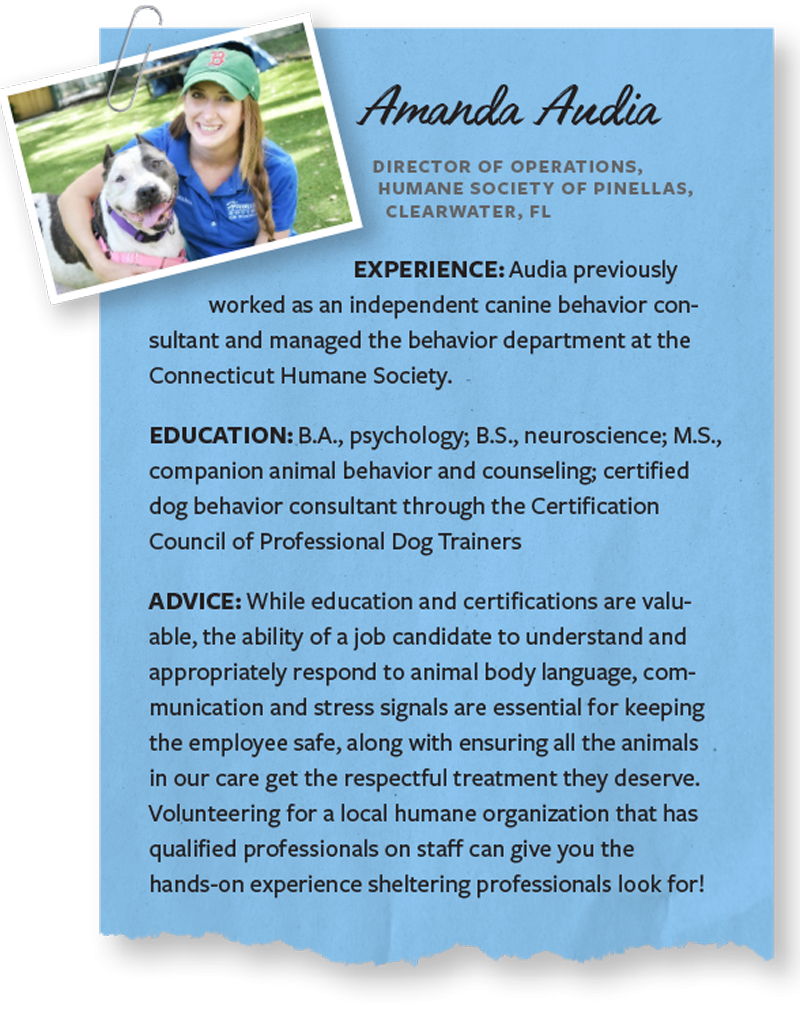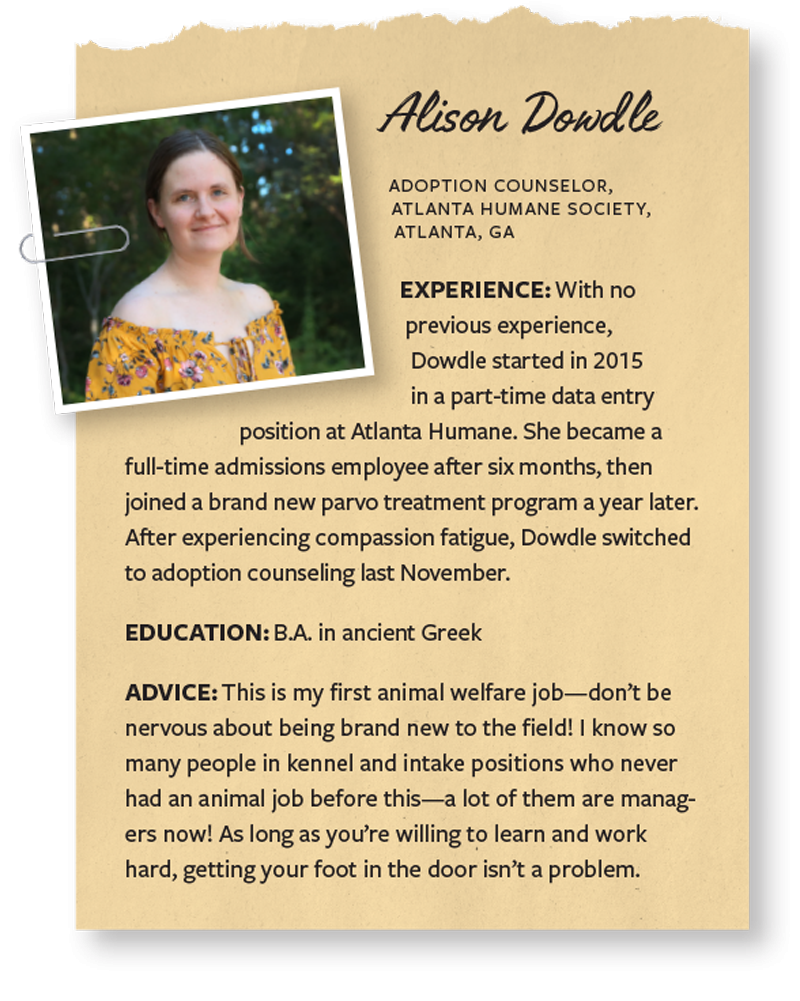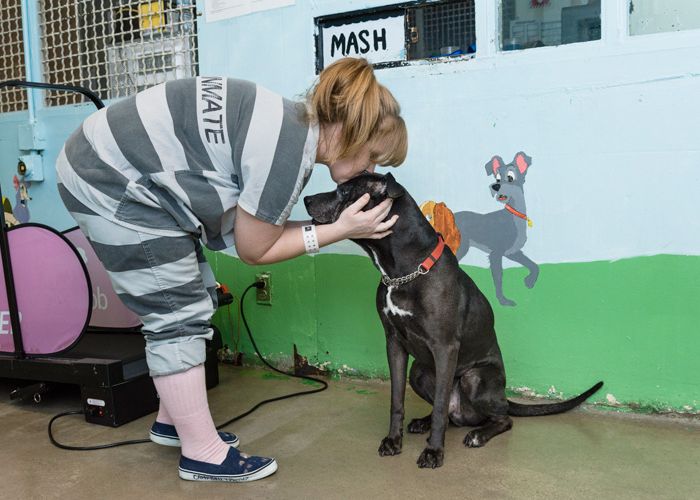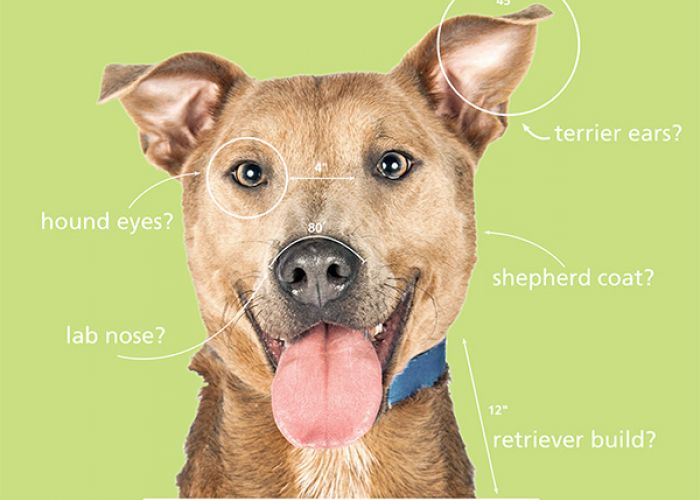Full-time for animals
There’s no single path to a career in animal welfare, so we asked staffers throughout the field to share their journeys and advice
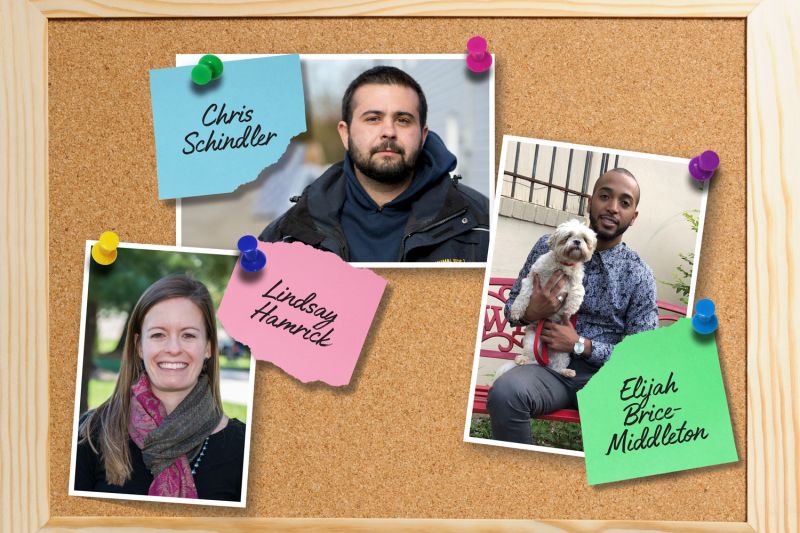
“I am OK with no money,” the poster admitted. “My passion is there and I’ve done it for free for years anyway.” She’d volunteered in the animal welfare field for over 10 years but had turned to this animal welfare forum to ask if her experience would “count” if she applied for a full-time sheltering position. Responses varied, but the overall answer? A resounding yes.
Potential paychecks notwithstanding, “So many people I know started out as dog walkers at a shelter, who then went on to get trained as a dog trainer, or parlayed that into an application for vet school, or ended up getting hired as adoption coordinators for the shelter itself,” says Hilary Hager, senior director of volunteer engagement at Humane World for Animals. Hager started out with a degree in international studies and served in the Peace Corps, which led her to a job in volunteer management at another nonprofit, after which she wound up managing volunteers at an animal shelter and getting a master’s degree in nonprofit leadership.
Chris Schindler, on the other hand, needed to get out of the house as a teenager, which led him to a job cleaning kennels at the local humane society in Washington, D.C., where he quickly decided that he wanted to investigate animal cruelty as a career. From there, he became an animal control officer and then field adviser at what was then the Washington Humane Society, then joined the HSUS’s puppy mills and dogfighting teams, and finally returned to D.C. to oversee dozens of animal control and humane law enforcement officers, animal cruelty investigators and various program managers as vice president of field services at the Humane Rescue Alliance.
“I got my GED at 17, and I never went to college or did any higher education. I never really felt like I was at home in that type of work,” Schindler says, adding that he bought his first suit at Target for his interview with the HSUS. “My work ethic and willingness to buckle down helped me create my own career path.”
So there’s no one right way to enter the animal welfare field, but entry-level jobs or volunteer work can show hiring managers that you have the passion, drive and basic knowledge needed to hack it full time.
“When I look at a resume and I see that people have been volunteering, my position is that they’ve been taking this really seriously; this isn’t just that they saw an open position. They’re rooted in this, and they understand what they’re potentially getting into,” says Hager. “They care enough about it that they have been of service, and even after they saw how challenging it can be, they still decided this is where they want to be.”
Adds Elijah Brice-Middleton, director of Plainfield Area Humane Society in New Jersey, “Above all, I want to see passion and knowledge of best practices.”

If you’re thinking of transitioning from volunteer to staffer, you’re likely already right where you need to be.
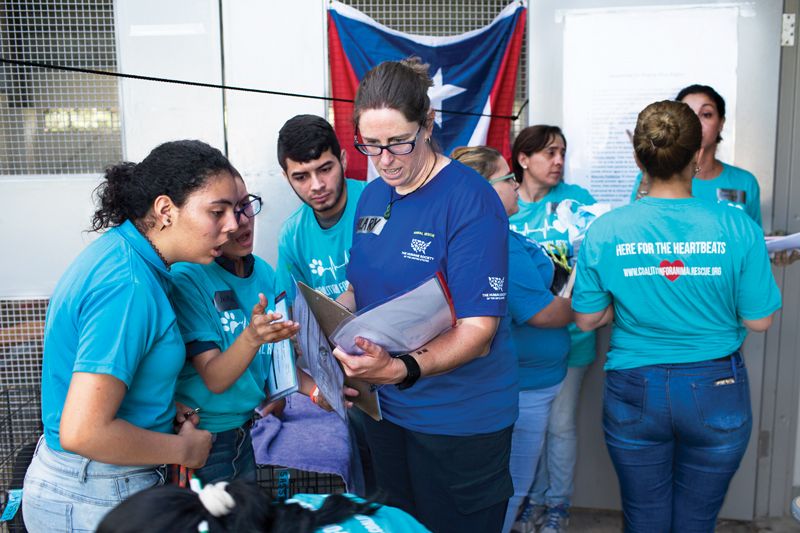
"Volunteers 'care enough about it that they have been of service, and even after they saw how challenging it can be, they still decided this is where they want to be.'"
—Hilary Hager, senior director of volunteer engagement, Humane World for Animals
Different schools of thought
“I knew I wanted to work with animals, I just didn’t know how,” says Lindsay Hamrick, director of companion animal policy at the HSUS. A program allowed her to shadow veterinarians during her senior year of high school, and she went on to study animal science and psychology in college, work at an African chimpanzee sanctuary for six months, obtain a master’s in animals and public policy and then become the director of operations at a relatively small New Hampshire shelter. For most people wanting to enter the field, this probably sounds pretty intimidating.
But Hamrick notes that people should weigh the cost of education (i.e., will you be paying student loans until you retire?) against the potential benefits (i.e., how much does specialized education really help in the animal welfare field?). “People come to shelters with a huge range of education and experiences,” she says. “I don’t think anyone should be discouraged.”
Although Hamrick wouldn’t take back her education, and there are certainly some roles that require specialized education (veterinarians, for example), she notes that her hands-on experiences gave her the best grasp of the issues that animals and people who work with animals face.
Brice-Middleton holds a bachelor’s in behavioral ecology and evolutionary biology but first worked in the financial technology industry before getting hired at his local animal shelter. He’s now working on a master’s in animal shelter management at Colorado State University. He doesn’t consider specialized education necessary “in the strictest sense,” but suggests higher education for those seeking leadership roles in addition to the hands-on experience needed for anyone seeking a shelter operations role like handling animal intakes or managing foster programs.
“There’s a plethora of outside experience that would be applicable to animal welfare positions,” he adds. “I got experience working both within and outside of the animal welfare field. Outside of the field, I got experience in finance, PR and research. Within the field, I worked in various shelter departments getting experience in management, admissions, adoptions, volunteer management, foster, marketing, community outreach. I was getting all of the experience I needed from both my professional and academic career to get to my current position as director.”
Schindler says that above education, he looks for animal handling experience and passion for the work. You can train people in animal handling techniques, but innate animal handling skills and the right personality can’t be taught, he says, noting that you can’t be afraid or reactive when you’re out in the field alone. He often promotes from within the shelter and recently promoted a front desk associate to animal control officer. He says those interested in working in the field can join animal control officers for “ride alongs,” which can help people get a better idea of what the job requires.
“You really have to learn from responding in the field and interfacing with people and the public,” says Schindler, noting that the Humane Rescue Alliance gets 20,000 calls for service each year. Even after 23 years in the field, “I don’t know everything. Nobody does. So we all have to keep learning from each other.”
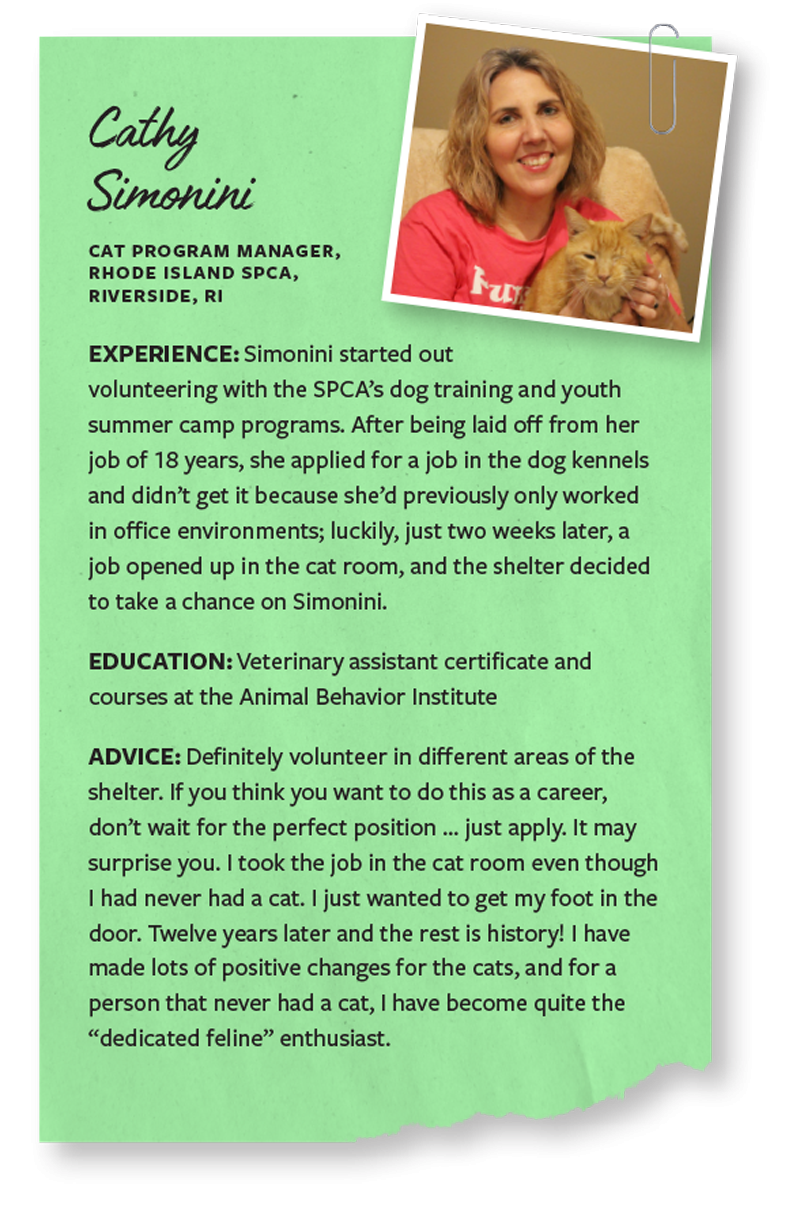
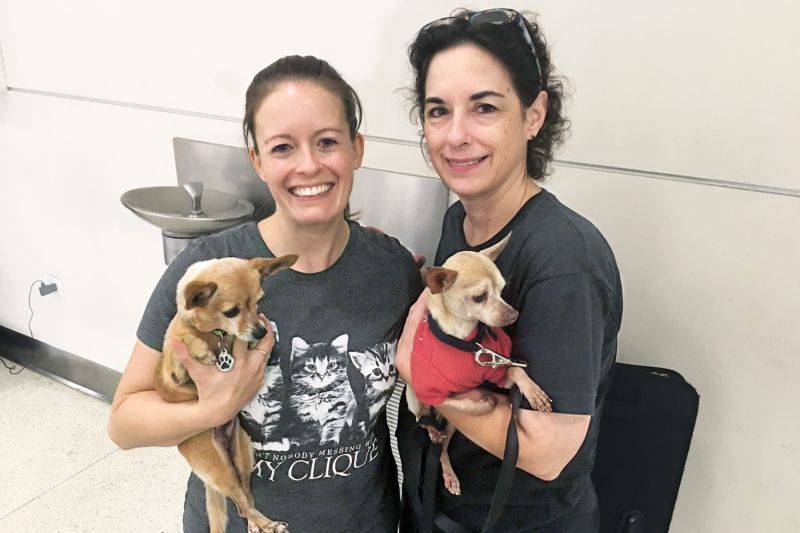
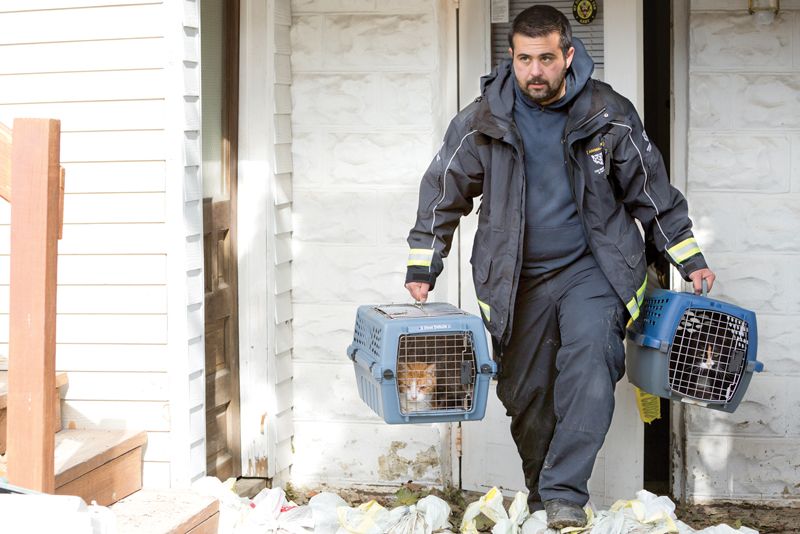
“I don’t know everything. Nobody does. So we all have to keep learning from each other.”
—Chris Schindler, Humane Rescue Alliance, Washington, D.C.
Take your pick
As many communities absorb the spay/neuter message, Brice-Middleton says that the future of sheltering will be animal organizations serving as resource centers for their communities and behavioral rehabilitation centers for special-needs animals who might once have been euthanized. Hager says that many animal organizations are now able to turn from the “three-alarm fire” of extreme pet overpopulation to more nuanced issues, like people and pets living in poverty with little access to pet care services, both nationally and internationally; people and animals facing climate change and natural disasters; and systemic animal cruelty like animal testing, puppy mills or factory farming.
These days, “You can kind of match your skill and your vocation with your avocation for animals,” says Hager. Both hands-on and behind-the-scenes opportunities abound in the shelter and rescue field alone, from kennel managers to field supervisors to pet retention counselors to foster coordinators to animal care specialists. Expand your job search to the entire animal protection movement—from farm animal sanctuaries to wildlife rehabilitation centers to political advocacy groups to emergency response organizations—and you’ve got graphic designers, scientists, web developers, journalists, teachers, architects, accountants, social media experts, database administrators and more all working toward a better world for animals and the people who love them.
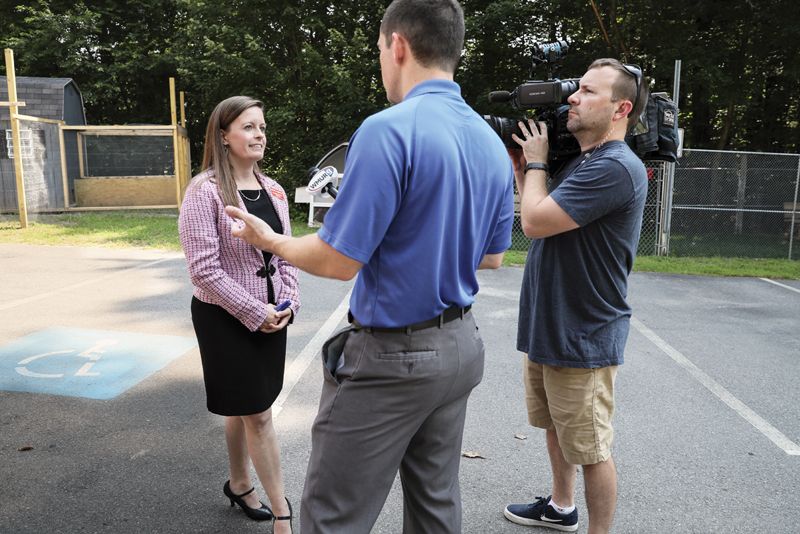
“People come to shelters with a huge range of education and experiences. I don’t think anyone should be discouraged.”
—Lindsay Hamrick, Humane World for Animals
So cast a wide net: There are more viable animal welfare careers than you might think. And don’t forget that your years of volunteering also functioned as networking—reach out to your contacts in the field, and consider that several HSUS staffers were hired after attending Animal Care Expo and other animal welfare conferences and handing out resumes.
Hager also notes that every nonprofit has a board of directors—she herself serves on the board of a nonprofit on top of her full-time job with the HSUS. Whether you’re a finance guru, an expert mediator or an entrepreneur, “it’s a way for people to leverage their expertise and their connections in the community and to benefit an organization and help strengthen the organization and move it forward,” she says, adding that many volunteer centers and recruiting sites list board openings. “It’s cool to know that you can help the organization get where it needs to go.”
“Now the animal protection [and] animal welfare world is so vast,” adds Hamrick, “really the challenge is just figuring out what you want to do.”
